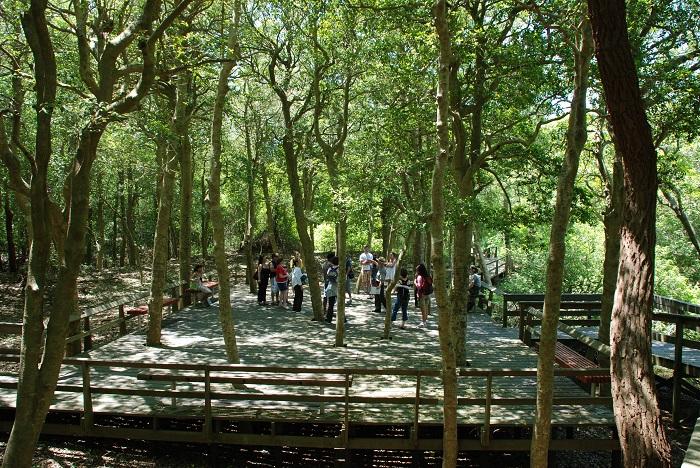
A fence will be built around the Sunken Forest at Fire Island National Seashore to protect it from deer/NPS
With white-tailed deer changing the natural ecosystem at Fire Island National Seashore, the National Park Service approved a White-tailed Deer Management Plan last month that includes direct population reduction as well as the construction of fences to preserve critical areas of the Seashore.
The Record of Decision outlines an integrated strategy to protect and restore the New York park, including the globally rare Sunken Forest and the historic William Floyd Estate. According to research conducted over three decades, the deer population at Fire Island has expanded, leading to severe negative impacts on vegetation and cultural landscapes, as well as an increase in undesirable human-deer interactions.
“We have a responsibility to manage all of the Seashore’s natural and cultural resources,” Superintendent Chris Soller said in a release, “and to work toward a healthy, balanced ecosystem that supports all wildlife.”
The plan calls for education and outreach to go along with direct population reduction – including sharpshooting, capture and euthanasia, and a public hunt – as well as fertility control. In addition, fencing expect to be at least 8-10 feet tall will be erected around the Sunken Forest and the core of the William Floyd Estate.
The Sunken Forest and other maritime forests on Fire Island – including Carrington, Talisman, Blue Point, and Watch Hill – are adversely impacted by heavy deer browse and are not regenerating naturally. The historic landscape at the William Floyd Estate, a unit of the Seashore located in Mastic Beach on Long Island, is also threatened by deer browse.
“Deer, vegetation, and social science research conducted at the Seashore and public comments solicited during the planning process informed the plan and the selection of this integrated management approach,” Soller said.
The Seashore has begun education and outreach efforts, and will continue its deer and vegetation monitoring efforts. Fencing and an initial reduction via sharpshooting on NPS lands within the Seashore boundary will be carried out when funding becomes available. Reduction goals will be based on the most recent deer population surveys and will be guided by the impacts of deer browse as measured during annual vegetation monitoring. Maintenance of the deer population may be conducted using fertility control, should a federally-approved agent become available and meet the established criteria in the plan.



Comments
Once again, the NPS failed to manage deer humanely. Killing fixes nothing and this curelty will never end. I hope the people rise up and fight this aggressively. There are humane options - that work!